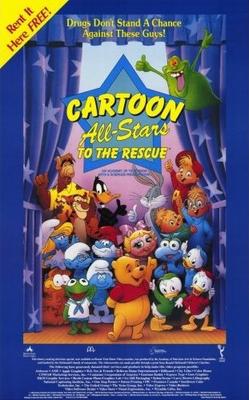The Smurf Amplifier Registry is a blacklist of networks on the Internet which have been misconfigured in such a way that they can be used as smurf amplifiers for smurf denial of service attacks.
It can probe networks for vulnerability to smurf amplification, and then will either add them to its database, or remove them from the database, depending on the result of the test.
The Domain Name System (DNS) is a hierarchical and distributed naming system for computers, services, and other resources in the Internet or other Internet Protocol (IP) networks. It associates various information with domain names assigned to each of the associated entities. Most prominently, it translates readily memorized domain names to the numerical IP addresses needed for locating and identifying computer services and devices with the underlying network protocols. The Domain Name System has been an essential component of the functionality of the Internet since 1985.

An amplifier, electronic amplifier or (informally) amp is an electronic device that can increase the magnitude of a signal. It is a two-port electronic circuit that uses electric power from a power supply to increase the amplitude of a signal applied to its input terminals, producing a proportionally greater amplitude signal at its output. The amount of amplification provided by an amplifier is measured by its gain: the ratio of output voltage, current, or power to input. An amplifier is defined as a circuit that has a power gain greater than one.
An IRC channel takeover is an acquisition of IRC channel operator status by someone other than the channel's owner. It has largely been eliminated due to the increased use of services on IRC networks.
A domain name registry is a database of all domain names and the associated registrant information in the top level domains of the Domain Name System (DNS) of the Internet that enables third party entities to request administrative control of a domain name. Most registries operate on the top-level and second-level of the DNS.
A Smurf attack is a distributed denial-of-service attack in which large numbers of Internet Control Message Protocol (ICMP) packets with the intended victim's spoofed source IP are broadcast to a computer network using an IP broadcast address. Most devices on a network will, by default, respond to this by sending a reply to the source IP address. If the number of machines on the network that receive and respond to these packets is very large, the victim's computer will be flooded with traffic. This can slow down the victim's computer to the point where it becomes impossible to work on.
An autonomous system (AS) is a collection of connected Internet Protocol (IP) routing prefixes under the control of one or more network operators on behalf of a single administrative entity or domain, that presents a common and clearly defined routing policy to the Internet. Each AS is assigned an autonomous system number (ASN), for use in Border Gateway Protocol (BGP) routing. Autonomous System Numbers are assigned to Local Internet Registries (LIRs) and end user organizations by their respective Regional Internet Registries (RIRs), which in turn receive blocks of ASNs for reassignment from the Internet Assigned Numbers Authority (IANA). The IANA also maintains a registry of ASNs which are reserved for private use.

A differential amplifier is a type of electronic amplifier that amplifies the difference between two input voltages but suppresses any voltage common to the two inputs. It is an analog circuit with two inputs and and one output , in which the output is ideally proportional to the difference between the two voltages:

A public address system is an electronic system comprising microphones, amplifiers, loudspeakers, and related equipment. It increases the apparent volume (loudness) of a human voice, musical instrument, or other acoustic sound source or recorded sound or music. PA systems are used in any public venue that requires that an announcer, performer, etc. be sufficiently audible at a distance or over a large area. Typical applications include sports stadiums, public transportation vehicles and facilities, and live or recorded music venues and events. A PA system may include multiple microphones or other sound sources, a mixing console to combine and modify multiple sources, and multiple amplifiers and loudspeakers for louder volume or wider distribution.

Cartoon All-Stars to the Rescue is a 1990 American animated television film starring many characters from several animated television series at the time of its release. Financed by McDonald's, Ronald McDonald Children's Charities, it was originally simulcast for a limited time on April 21, 1990, on all four major American television networks : ABC, CBS, NBC, and Fox, and most independent stations, as well as various cable networks. McDonald's released a VHS home video edition of the special distributed by Buena Vista Home Video, which opened with an introduction from President George H. W. Bush, First Lady Barbara Bush and their dog, Millie. It was produced by the Academy of Television Arts & Sciences Foundation and Southern Star Productions, and was animated overseas by Wang Film Productions. The musical number "Wonderful Ways to Say No" was written by Academy Award-winning composer, Alan Menken and lyricist Howard Ashman, who also wrote the songs for Walt Disney Animation Studios' The Little Mermaid, Beauty and the Beast, and Aladdin.

The Windows Registry is a hierarchical database that stores low-level settings for the Microsoft Windows operating system and for applications that opt to use the registry. The kernel, device drivers, services, Security Accounts Manager, and user interfaces can all use the registry. The registry also allows access to counters for profiling system performance.

Smurfette is one of the protagonists from the comic strip The Smurfs. Smurfette was created by the evil wizard Gargamel, the Smurfs' archenemy, in order to spy on them and sow jealousy. However, she decides that she wants to be a real Smurf and Papa Smurf casts a spell that changes her hair from black to blonde as a sign of her transformation. She was the only female Smurf until the creation of Sassette. A Granny Smurf was also later introduced, although it is unclear how she was created. Thierry Culliford, the son of the comics' creator, Peyo, and current head of the Studio Peyo, announced in 2008 that more female Smurfs would be introduced in the stories. Smurfette has stereotypical feminine features, with long blonde wavy hair, long eyelashes, and wears a white dress and white high heels. She is the love interest of almost every Smurf.

The Smurfs is a 2011 American fantasy adventure comedy film based on the comic series of the same name created by the Belgian comics artist Peyo. It was directed by Raja Gosnell and stars Neil Patrick Harris, Jayma Mays, Sofia Vergara and Hank Azaria, with the voices of Jonathan Winters, Katy Perry, George Lopez, Anton Yelchin, Fred Armisen and Alan Cumming. It is the first live-action Sony Pictures Animation film and the first of two live-action animated Smurfs feature films.
WHOIS is a query and response protocol that is used for querying databases that store an Internet resource's registered users or assignees. These resources include domain names, IP address blocks and autonomous systems, but it is also used for a wider range of other information. The protocol stores and delivers database content in a human-readable format. The current iteration of the WHOIS protocol was drafted by the Internet Society, and is documented in RFC 3912.
The following outline is provided as an overview of and topical guide to the Internet.
The Smurfs and the Magic Flute is a 1976 Belgian animated film starring the Smurfs, directed by their creator, Peyo. Although the film premiered in 1976 in Belgium, it was not released in the United Kingdom until 1979, and in the United States until 1983, in the wake of the characters' newfound popularity.
Orphanet is an organisation and knowledge base dedicated to rare diseases as well as corresponding diagnosis, orphan drugs, clinical trials and expert networks.

The Smurfs is a Belgian comic franchise centered on a fictional colony of small, blue, humanoid creatures who live in mushroom-shaped houses in the forest. The Smurfs was first created and introduced as a series of comic characters by the Belgian comics artist Peyo in 1958, wherein they were known as Les Schtroumpfs. There are more than 100 Smurf characters, and their names are based on adjectives that emphasise their characteristics, such as "Jokey Smurf", who likes to play practical jokes on his fellow Smurfs. "Smurfette" was the first female Smurf to be introduced in the series. The Smurfs wear Phrygian caps, which came to represent freedom during the modern era.

The Smurfs have appeared in five feature-length films and two short films loosely based on The Smurfs comic book series created by the Belgian comics artist Peyo and the 1980s animated TV series it spawned. They theatrically debuted in a 1965 animated feature film that was followed by a 1976 animated film titled The Smurfs and the Magic Flute. Twenty-eight to thirty years after The Magic Flute was released in the United States, a 2011 feature film and a 2013 sequel were produced by Sony Pictures Animation and released by Columbia Pictures. Live-action roles include Hank Azaria, Neil Patrick Harris, and Jayma Mays, while the voice-over roles include Anton Yelchin, Jonathan Winters, Katy Perry, and George Lopez. A fully animated reboot titled Smurfs: The Lost Village was released through Sony in April 2017.

The Smurfs: The Legend of Smurfy Hollow is a direct-to-video American animated comedy adventure short film based on The Smurfs comic book series created by the Belgian comics artist Peyo. A sequel to The Smurfs 2 (2013), the short was written by Todd Berger and directed by Stephan Franck, and it stars the voices of Melissa Sturm, Fred Armisen, Anton Yelchin and Hank Azaria. The film was produced by Sony Pictures Animation with the animation by Sony Pictures Imageworks and Duck Studios. The Smurfs: The Legend of Smurfy Hollow was released on DVD on September 10, 2013. The film is loosely based on Washington Irving's 1820 short story "The Legend of Sleepy Hollow".

Smurfs: The Lost Village is a 2017 American animated fantasy adventure comedy film based on The Smurfs comic series by Peyo, produced by Columbia Pictures, Sony Pictures Animation, The Kerner Entertainment Company, and Wanda Pictures, in association with LStar Capital, and distributed by Sony Pictures Releasing. A reboot to Sony's previous live-action/animated hybrid movies and the third and final installment in Sony's Smurfs film series, the film was directed by Kelly Asbury from a screenplay written by Stacey Harman and Pamela Ribon, and stars the voices of Demi Lovato, Rainn Wilson, Joe Manganiello, Mandy Patinkin, Jack McBrayer, Danny Pudi, Michelle Rodriguez, Ellie Kemper, Jake Johnson, Ariel Winter, Meghan Trainor, and Julia Roberts. In the film, a mysterious map prompts Smurfette, Brainy, Clumsy, and Hefty to find a lost village before Gargamel does. The film introduced the female Smurfs, who appeared in the franchise the following year.